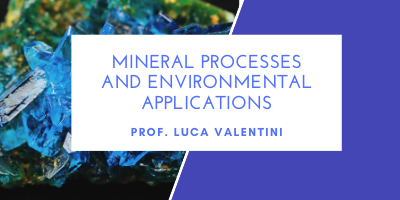Mineral Processes and Environmental Applications

Period: second semester
Course units contents:
1. Mineral bulk properties: elements of mineral physics; microstructure; porosity. Case studies: composite materials; aerogels; zeolites and metal organic frameworks.
2. Thermodynamics and chemistry of aqueous solutions, thermodynamic modelling. Case studies: modelling ocean acidification and its impact on coral reefs
3. Surface properties and the mineral/water interface: specific surface area; surface defects; surface charge. Case studies: nanoparticles for environmental remediation.
4. Reaction kinetics at the mineral water/interface: dissolution, adsorption, diffusion. Case studies: soil remediation; formation of dendritic minerals.
5. Nucleation and growth: classical and non-classical theories. Case studies: perovskites for solar cells; biomimetic minerals.
6. Role of mineral forming processes in sustainable development. Case studies: cement and concrete; clay-based construction materials; urban mining.
7. Numerical modelling of nucleation and growth.
Planned learning activities and teaching methods: Powerpoint lectures; YouTube videos; interactive learning with Moodle and Wooclap; calculation of thermodynamic equilibria (GEMS software); assisted writing of MATLAB codes
In addition to contacting the course instructor, students with disabilities, Specific Learning Disorders (SLD), Special Educational Needs (SEN), and other health conditions can reach out to the Student Services Office - Inclusion Unit to receive more information about opportunities to access teaching with specific support and tools.
